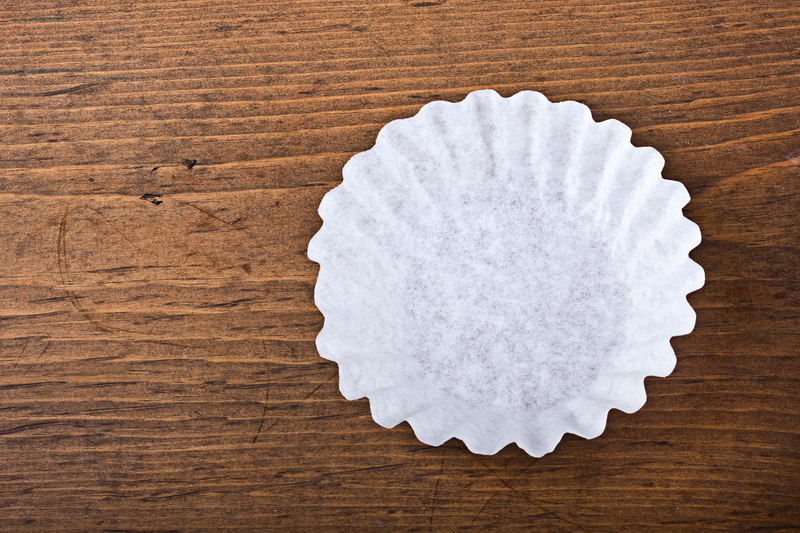Adopt proven methods to cleanse velvet curtains without compromise
Posted on 18/05/2025
Adopt Proven Methods to Cleanse Velvet Curtains Without Compromise
Velvet curtains bring a sense of opulence, warmth, and sophistication to any interior setting. Their plush texture, rich colors, and dramatic flair make them a coveted choice for both traditional and contemporary homes. However, the same qualities that make velvet curtains so enchanting also demand meticulous care to preserve their beauty. If you want your velvet drapes to remain sumptuous and vibrant for years, it is crucial to adopt proven methods to cleanse velvet curtains without compromise. In this comprehensive article, we explore expert techniques, essential tips, and the best practices for cleaning velvet curtains while protecting their delicate fibers.

Understanding Velvet: The Unique Challenges
Before beginning any cleaning process, it's important to understand the unique properties of velvet fabric. Velvet is a soft, luxurious material characterized by its dense pile of evenly cut fibers, which gives it a distinctive smoothness and shine. Because of its pile, velvet attracts dust, pet hair, and even odors more easily than flat-weave fabrics. Additionally, velvet can be prone to crushing, staining, and watermarks if not handled properly. Therefore, cleaning velvet curtains requires special attention and a gentle approach to avoid any compromise.
Why Regular Care Is Essential
Just like any other household fabric, velvet curtains accumulate dust, airborne particles, and allergens over time. If neglected, these contaminants can dull the fabric's sheen, promote discoloration, and harbor allergens. Regular care and scheduled cleaning will help maintain the stunning appearance and longevity of your velvet drapes without risking damage.
Identifying the Type of Velvet
The first step before cleaning is to identify the type of velvet you own. Common types include:
- Cotton Velvet: Composed of natural fibers, offers a matte look, and is relatively more robust but can shrink if wet cleaned incorrectly.
- Silk Velvet: Exceedingly luxurious and delicate, requires the utmost care, generally sensitive to moisture.
- Synthetic Velvet (Polyester, Rayon): Often more durable, easier to spot-clean, but still prone to pile distortion if mishandled.
Always consult the manufacturer's care label for specific cleaning guidance. If in doubt, opt for professional cleaning services for antique or highly valuable draperies.
Essential Tools and Materials for Cleansing Velvet Curtains
- Handheld vacuum with upholstery attachment
- Lint roller or soft clothes brush
- Clean white cloths for dabbing
- Mild liquid detergent
- Distilled water (to prevent water spots)
- Bowl or spray bottle for mixing cleaning solution
- Sponge
- Steamer (optional, for refreshing and removing wrinkles)
Proven Methods to Cleanse Velvet Curtains Without Compromise
1. Routine Velvet Curtain Maintenance for Lasting Luster
Routine maintenance is your first line of defense in keeping your velvet curtains pristine. This involves:
- Vacuuming: Use a handheld vacuum with a soft brush attachment. Gently vacuum in the direction of the nap (pile) to remove dust and dirt, avoiding excessive pressure.
- Brushing: A lint roller or a soft clothes brush can help lift pet hair and lint embedded in the fabric, preserving its smooth texture.
- Spot Cleaning: Address spills immediately to prevent stains from setting in. Absorb liquids with a clean, white cloth using a gentle blotting motion. Avoid rubbing, as friction can flatten the pile.
*Tip: Conduct maintenance weekly or bi-weekly, depending on your household's dust and pet situation.*
2. How to Remove Stains from Velvet Drapes
When an accident occurs, quick and careful action is vital. To cleanse velvet curtains without compromise when faced with a stain:
- Blot immediately: Use a clean, dry, white cloth to absorb as much of the spill as possible. Do not apply pressure or rub.
- Dilute stain: Mix a few drops of mild detergent in a bowl of distilled water. Dampen a white cloth with the solution, wring it well, and dab the stained area gently.
- Rinse: Dampen a new cloth with clean distilled water to blot away any detergent residue. Again, avoid overwetting the fabric.
- Dry properly: Pat dry with a towel. Allow the area to air-dry away from direct sunlight and heat. Once dry, use a soft brush to restore the nap.
Note: Test any cleaning solution on a small, inconspicuous part of the curtain first to ensure no discoloration or pile damage.
3. Deep Cleaning Velvet Curtains: Professional or DIY?
Occasionally, routine care and spot cleaning may not suffice, especially if your velvet drapes show signs of widespread dirt or embedded odors. Here are the options for deep cleansing velvet curtains without compromise:
-
Professional Dry Cleaning:
Most velvet--especially silk-based or antique--should be dry-cleaned by professionals to maintain fabric integrity. Specify your curtain's fiber content and stains for focused treatment. -
DIY Washing (for washable velvet):
Some polyesters and cotton velvets are labeled as machine or hand washable. Always use cold water, mix gentle detergent with water, and wash the curtains on a delicate cycle or soak gently by hand. Avoid wringing or twisting the fabric. Lay the drapes flat on towels to dry, reshaping them carefully. Never hang wet velvet as this can cause the fibers to stretch.
*Important: Read the care label closely before attempting any at-home washing. If your velvet curtains have interlining or elaborate trims, stick to professional cleaning methods.*
4. Refreshing and Deodorizing Velvet Curtains
Between major cleans, you can refresh and deodorize your velvet drapes using a handheld steamer or by simply airing them out.
- Steaming: Hold a garment steamer several inches away from the curtains to release wrinkles, remove light odors, and revive the pile. Do not press the steamer directly onto the fabric or oversaturate. Always test a small area first.
- Air Out: On pleasant, dry days, open windows to allow fresh air to circulate around your velvet curtains. This prevents mustiness and gives your drapes a light refresh.
Expert Tips for Keeping Velvet Curtains in Pristine Condition
- Rotate Curtains Periodically: Change the position of the curtains to distribute exposure to sunlight and avoid uneven fading.
- Limit Sunlight Exposure: Prolonged UV exposure can weaken and fade velvet's colors. Use sheer inner curtains or UV-protective films on windows.
- Avoid Direct Contact with Moisture: Watermarks can permanently alter velvet's appearance. Handle with care in rooms with high humidity.
- Store with Care: If storing velvet curtains, wrap them in a breathable cotton sheet rather than plastic to prevent condensation and mildew.
- Address Pet Hair Promptly: Use a fabric-safe lint remover or a soft brush to avoid the buildup of pet dander and hair.
Common Mistakes to Avoid When Cleansing Velvet Curtains
- Do Not Machine Wash Unless Specified: Most velvet curtains are not machine washable, except for certain synthetic types. Always check the care label.
- Do Not Rub or Scrub: Vigorous action can crush the velvet pile or create permanent marks.
- Avoid Harsh Chemicals: Bleach, ammonia, and non-fabric softeners can cause discoloration and fiber damage.
- Never Hang Wet Velvet: This can result in stretching or misshaping of the curtain fabric.

FAQs: Answering Your Questions on Velvet Curtain Cleaning
Can I steam clean velvet curtains?
Yes, but with caution. Use a handheld steamer at a safe distance to loosen dirt and rejuvenate the pile, but avoid saturating the fabric. Always perform a patch test before widespread steaming.
Is it safe to iron velvet curtains?
No, direct ironing is not recommended. Ironing can crush the pile and leave shiny marks. Instead, use a steamer or hang the curtains in a steamy bathroom to naturally release wrinkles.
How frequently should I clean my velvet curtains?
Routine maintenance (vacuuming and brushing) should be done weekly or bi-weekly. Deep cleansing methods are necessary every 12-18 months, or as needed based on environmental factors.
What can I do for musty odors?
Airing out and gentle steaming can eliminate most odors. For persistent smells, consult a professional cleaner, as deep odors may be embedded in the lining or pile.
Conclusion: Enjoy Your Velvet Curtains, Keep Them Beautiful
Velvet curtains are a timeless addition that elevates any living space. With just a little care--and by adopting proven methods to cleanse velvet curtains without compromise--you can ensure that your precious drapes remain as vibrant and inviting as the day you bought them. Remember to identify your curtain's velvet type, use only gentle cleaning solutions and techniques, and opt for professional help when in doubt.
By following these comprehensive, expert-certified guidelines, you'll protect your investment and delight in the enduring beauty that velvet brings to your home. For more helpful tips on curtain care and home maintenance, bookmark this page and revisit anytime!
- Maintain regularly - vacuum, brush, and spot clean as needed.
- Handle with care - gentle action saves the day!
- Deep clean responsibly - when in doubt, go professional.
Your velvet curtains deserve the finest care--never compromise on their splendor, and they will continue to bathe your home in luxurious comfort year after year.




